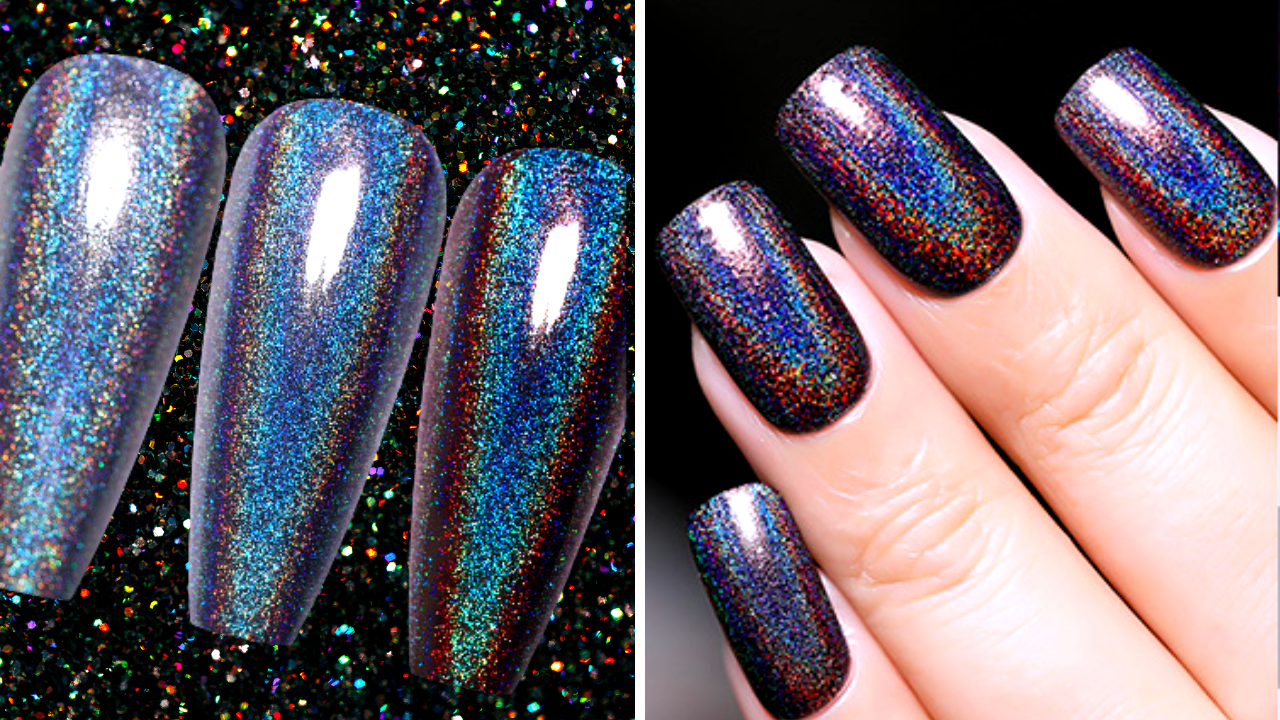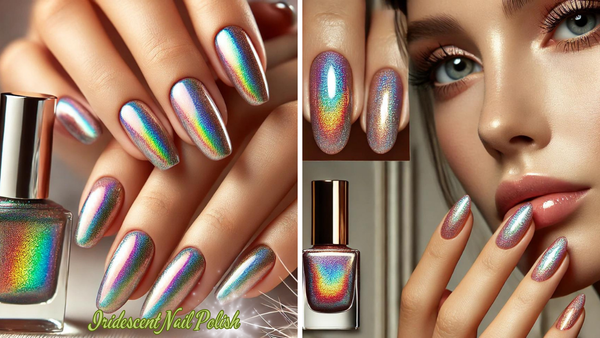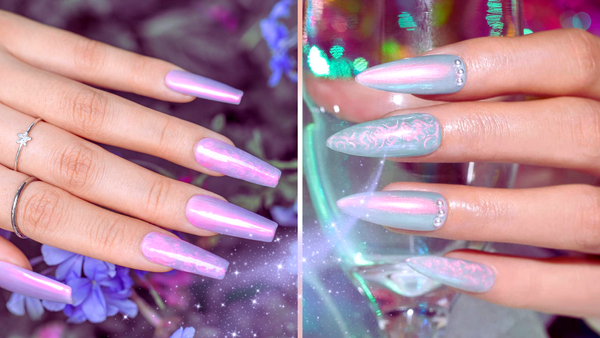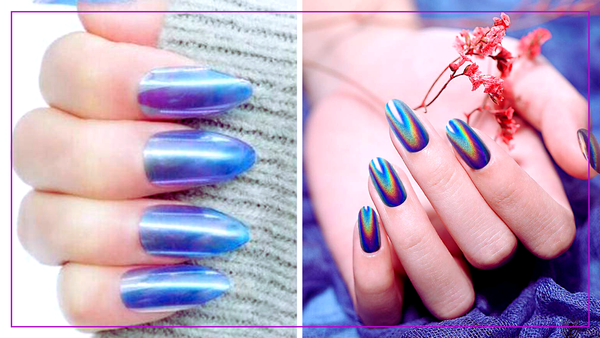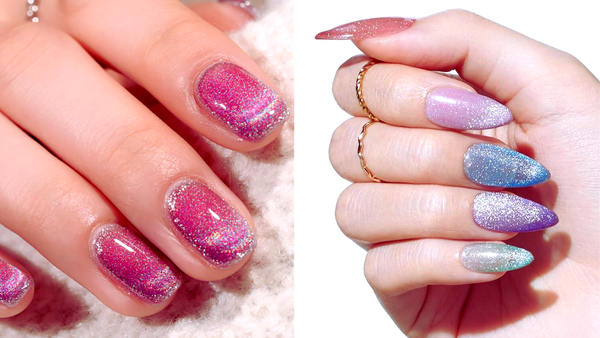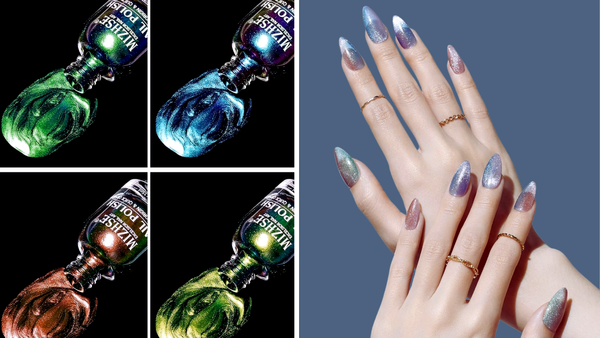Key Takeaways:
- Holographic nail polish contains pigments that refract light to create a stunning rainbow effect.
- The base ingredients in holographic polishes are similar to those in regular nail polish but contain specialized glitter.
- Holographic nail polishes offer a unique visual experience and are available in various types, such as scattered and linear.
Holographic nail polish has taken the beauty world by storm, offering an eye-catching sparkle that shifts in different lighting conditions. But what exactly goes into this mesmerizing polish? Let's dive into the composition and science behind holographic nail polishes.
The Basic Composition

At its core, holographic nail polish has the same foundational components as regular nail polish. These include film-forming agents like nitrocellulose, plasticizers such as ethyl acetate and butyl acetate to improve flexibility, and solvents like isopropyl alcohol to maintain a liquid consistency that's easy to apply. What sets holographic nail polish apart is the addition of holographic pigments.
Holographic Pigments: The Star of the Show
Holographic pigments are the key ingredients that give holographic nail polish its unique shimmer. These pigments are micro-fine particles of reflective material, typically made from aluminum or magnesium fluoride, coated in a thin metallic layer. When light hits these particles, it's refracted into a spectrum of colors, creating the dazzling holographic effect.
The Science Behind the Sparkle
Holographic nail polishes are not just about the glitter; they're a marvel of cosmetic chemistry. When light hits these polishes, the holographic pigments inside refract light, splitting it into a spectrum of colors that dazzle the eye. This effect is due to the precise size and shape of the holographic particles. Typically, these particles are coated with magnesium fluoride, which enhances their ability to bend light, creating that mesmerizing rainbow effect seen under direct sunlight or UV light.
Moreover, the base of holographic nail polish plays a crucial role. Common ingredients like ethyl acetate, butyl acetate, and acetyl tributyl citrate dissolve and uniformly blend the glitter in the polish. This ensures a smooth application and a stunning, even spread of holographic glitter. The base also often contains stearalkonium bentonite, which helps stabilize the formula, ensuring that the holographic particles are suspended evenly throughout the polish, preventing them from settling at the bottom of the bottle.
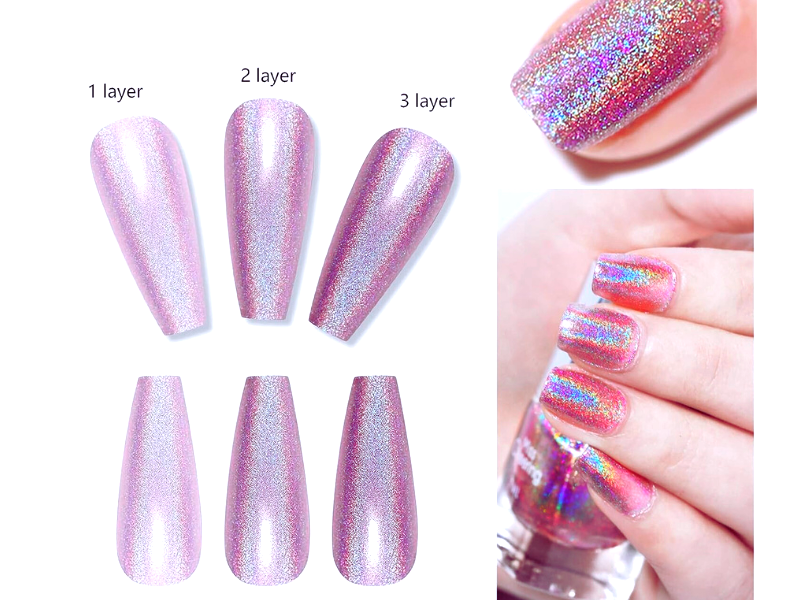
Crafting the Perfect Holographic Manicure
Achieving the perfect holographic manicure involves more than just applying the polish. It starts with a good base coat, which not only protects the nails but also provides a smooth canvas for the holographic polish to adhere to. After applying the holographic nail polish, it's essential to use a top coat to seal the shimmer and extend the durability of the manicure. This top coat also enhances the holographic effect, making the nails look as if they are jam-packed with tiny prisms catching light at different angles.
For those looking to intensify the holographic effect, applying the polish in thin layers and allowing each layer to dry under direct sunlight or a UV lamp can make a significant difference. The light helps to cure the polish faster and brings out the vividness of the holographic pigments. Brands like Sally Hansen and China Glaze offer formulations that are specifically optimized for a more pronounced holographic look, ensuring that your nails not only catch the light but also everyone's attention.
Types of Holographic Polishes
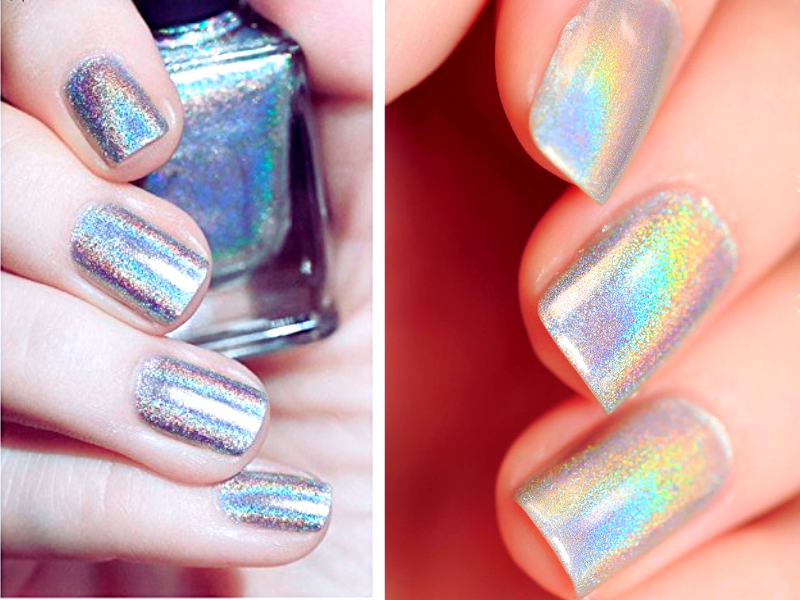
Holographic nail polishes come in two main types: scattered and linear. Scattered holographic polishes contain pigments randomly distributed throughout the polish, resulting in a prismatic sparkle from all angles. Linear holographic polishes, on the other hand, have pigments aligned in a specific pattern, which produces a more uniform rainbow effect when viewed from certain angles.
Application and Effect
Applying holographic nail polish is similar to using regular polish. Start with a base coat to protect your nails, followed by one or two coats of holographic polish. For an intensified effect, a top coat can be added to enhance the durability and shine. The true magic of holographic polish is observed under direct sunlight or intense lighting, where the full spectrum of the rainbow comes alive.
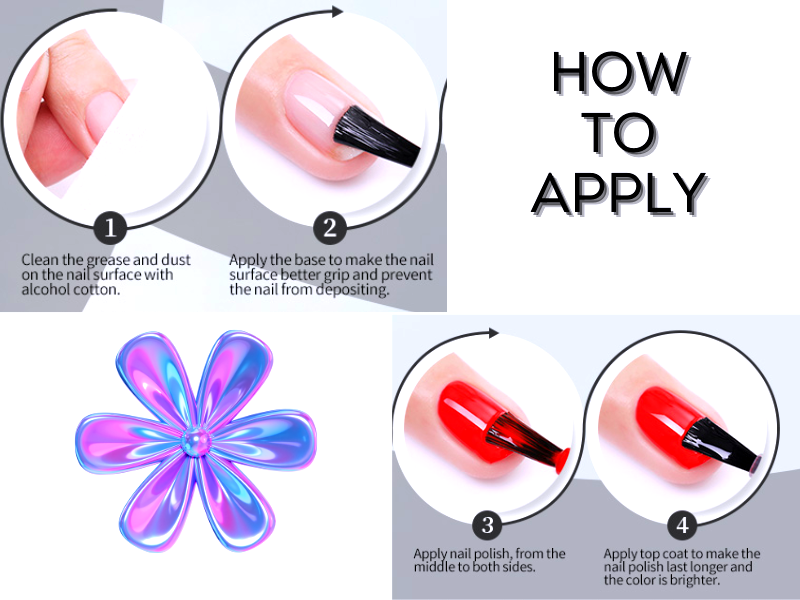
Popular Brands and Formulations
Several brands have made a mark with their holographic collections. Sally Hansen, China Glaze, and other popular names offer a range of colors from subtle silver to vibrant purple, all infused with holographic glitter. These brands ensure their products are cruelty-free, adhering to ethical standards in beauty product manufacturing.
Summary
Holographic nail polish is a dynamic and visually stunning option for those looking to add a bit of sparkle to their style. Made from standard nail polish ingredients and special holographic pigments, these polishes capture and refract light to create a mesmerizing spectrum of colors. Whether you prefer a scattered sparkle or a linear rainbow, holographic nail polish offers a unique and eye-catching finish that's perfect for any occasion.
FAQ
Can holographic nail polish be used without a base coat?
Yes, holographic nail polish can be used without a base coat, but using a base coat can enhance its longevity and vibrancy.
Are there any special removal techniques for holographic nail polish?
Holographic nail polish can be removed in the same way as regular nail polish, using a nail polish remover containing acetone or acetyl tributyl citrate for best results.
How long does holographic nail polish last before it begins to chip?
Typically, holographic nail polish can last anywhere from 3 to 7 days without chipping, depending on the quality of the polish and how it's applied. Using a top coat can extend this duration.
